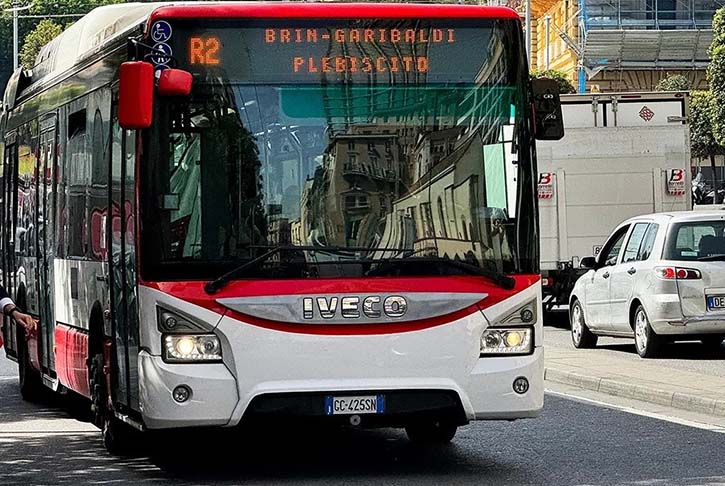Naples, the vibrant capital of the Campania region in southern Italy, is a city steeped in history, culture, and, of course, delicious cuisine. As someone who loves to explore urban landscapes, I found that navigating Naples can be an adventure in itself, particularly when it comes to public transportation. In this guide, I will share my experiences and insights on how to effectively get around Naples using its public transport system, covering everything from buses and trains to the metro and ferries.
Understanding the Public Transportation System
Naples has a well-developed public transportation system that includes buses, trams, the metro, and funiculars. Each mode of transport connects various neighborhoods, tourist attractions, and essential services, making it easy to explore the city without the need for a car. Here’s a breakdown of the primary modes of public transport available in Naples.
1. Metro
The Naples Metro is a reliable and efficient way to get around the city. The system consists of two main lines:
- Line 1 (Metropolitana Linea 1): This line runs from the northern suburb of Piscinola to the southern area of Garibaldi, passing through key stations such as the historic center, Toledo (known for its stunning artwork), and Dante.
- Line 2 (Metropolitana Linea 2): This line connects Naples with Pozzuoli, a coastal town in the province of Naples. It runs through the central station of Napoli Centrale, which is useful for catching trains to other Italian cities.

Ticketing for the Metro
Tickets for the metro can be purchased at ticket machines found in every station, at tobacco shops (Tabacchi), or through the official website of the public transport company, ANM. The tickets are relatively inexpensive; a single ticket costs around €1.10 and is valid for 90 minutes across all modes of transport. There are also day passes available for unlimited travel for 24 hours, which can be a great option for tourists.
Tips for Using the Metro
- Mind the Crowds: During rush hours, especially in the morning and late afternoon, the metro can get crowded. Try to travel outside of these times if possible.
- Know Your Stops: Familiarize yourself with the key metro stations near your accommodation and places you want to visit. Google Maps is reliable for navigating public transport routes in Naples.
- Keep an Eye on Your Belongings: Like many major cities, Naples has its share of pickpockets. Keep your valuables secure and be aware of your surroundings.
2. Buses and Trams
The bus network in Naples is extensive, covering areas that the metro does not reach. Buses and trams are operated by ANM and provide a great way to explore the city’s neighborhoods.
- Buses: The bus system has many routes that connect various parts of the city, including popular tourist sites and residential areas. Notable bus lines for tourists include 151, which takes you to Mergellina (a lovely waterfront area), and 130, which connects the central station to the historical center.
- Trams: While less common than buses, trams are also part of the public transport network. The most used line is Tram 1, which runs from Piazza Garibaldi to Via Medina, passing through significant districts.
Ticketing for Buses and Trams
The same ticket used for the metro is valid for buses and trams. Tickets can be validated by stamping them at the designated machines at the beginning of your journey.
Tips for Using Buses and Trams
- Check Schedules: Bus and tram schedules can be irregular, especially on weekends or holidays. Use the ANM app or Google Maps to check real-time arrivals.
- Be Patient: Buses can sometimes be delayed due to traffic, so allow extra time for travel when heading to important destinations.
3. Funiculars
Naples is a city of hills, and funiculars are an essential part of the transport network. These cable cars provide easy access to higher areas of the city, such as Vomero and the Posillipo hill district.

- Funiculars: There are four main funicular lines in Naples:
- Funicolare di Chiaia: Connects the Chiaia district to the hill of Vomero.
- Funicolare di Montesanto: Links Montesanto with the Vomero area.
- Funicolare di Centrale: Runs from Via Cimarosa to Via Morghen.
- Funicolare di Mergellina: Connects Mergellina to the higher parts of Posillipo.
Tips for Using Funiculars
- Enjoy the View: The funiculars offer stunning views of Naples and the Bay of Naples, so make sure to enjoy the ride!
- Avoid Rush Hours: Similar to the metro, funiculars can be quite busy during peak times, especially in the morning and late afternoon.
4. Ferries and Hydrofoils
Being a coastal city, Naples also has a network of ferries and hydrofoils that connect it to nearby islands such as Capri, Ischia, and Procida. This is a fantastic option for those wanting to explore the beautiful islands surrounding Naples.
Where to Catch Ferries
The main ferry terminal is located at Molo Beverello, close to the city center. Tickets can be purchased at the terminal or online.
Tips for Using Ferries
- Check the Weather: Ferry schedules can be affected by weather conditions, so always check before you plan your trip to the islands.
- Book in Advance: During the high season, it’s advisable to book tickets in advance, especially for popular destinations like Capri.
5. Taxis and Ride-Sharing
Taxis are readily available in Naples and can be a convenient option for getting around, especially late at night or if you have heavy luggage. Taxis can be hailed on the street or booked via phone.
- Taxi Fares: Taxi fares in Naples are metered, with a base fare that increases based on distance traveled and time of day. There may also be additional fees for luggage.

Ride-Sharing Apps
Ride-sharing apps like Uber are available in Naples but are less commonly used than in other major cities. Local alternatives like Free Now or Bolt can be more prevalent.
Tips for Using Taxis and Ride-Sharing
- Use Official Taxis: Ensure you’re getting into an official taxi, identifiable by their taxi sign and license number.
- Know Your Destination: It’s helpful to have your destination written down in Italian, especially if you’re not confident in your language skills.
6. Biking Around Naples
While not as popular as other forms of transportation, biking can be an enjoyable way to explore Naples, especially along the waterfront and in designated bike lanes.
- Bike Rentals: There are various bike rental services available throughout the city, including electric bikes for those who want to tackle the hilly terrain.
- Biking Areas: The Lungomare (seaside promenade) offers a beautiful path for cyclists, with stunning views of the Bay of Naples and Mount Vesuvius.
Tips for Biking in Naples
- Be Cautious: Traffic in Naples can be chaotic, so it’s essential to stay alert and follow local biking laws.
- Use Bike Lanes: Whenever possible, stick to designated bike lanes for safety.
Safety Tips for Using Public Transportation in Naples
While public transportation in Naples is generally safe, here are a few tips to ensure a smooth experience:
- Stay Aware of Your Belongings: Keep your bags close and be mindful of pickpockets, especially in crowded areas.
- Travel During Daylight: If possible, avoid using public transport late at night. If you must travel after dark, stick to well-lit, populated areas.
- Learn Basic Italian Phrases: Knowing a few essential phrases can help ease communication and make your experience more enjoyable.
Navigating Naples via public transportation can be a delightful experience, allowing you to immerse yourself in the local culture while exploring this beautiful city. With a combination of metro, buses, funiculars, and ferries, you’ll find that getting around is not only convenient but also offers a glimpse into the everyday life of Neapolitans.
During my time in Naples, I enjoyed the freedom of public transport, discovering hidden gems, indulging in delicious street food, and soaking in the vibrant atmosphere of this remarkable city. Whether you’re visiting for the history, the food, or the breathtaking views, utilizing the public transportation system will enhance your journey, making it easier to explore all that Naples has to offer.











+ There are no comments
Add yours